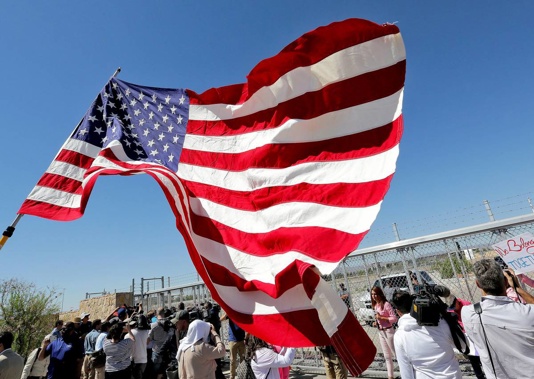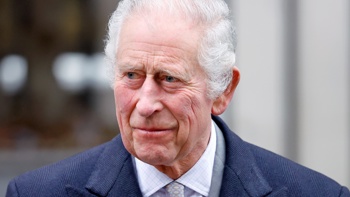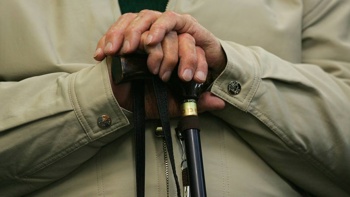
Immigration enforcement on the United States-Mexico border was plunged deeper into chaos over President Donald Trump's reversal of a policy separating immigrant children from parents, causing uncertainty for both migrant families and the federal agencies in charge of prosecuting and detaining them.
A senior Trump Administration official said that about 500 of the more than 2300 children separated from their families at the border have been reunited since May. It was unclear how many of the children were still being detained with their families.
Federal agencies were working to set up a centralised reunification process for the remaining separated children and their families at a detention centre just over the border in Texas, said the official, who was not authorised to speak publicly.
There were also signs that the Administration was dialling back its "zero-tolerance" policy, for now.
The federal public defender's office for the region that covers cases from El Paso to San Antonio said yesterday that the US Attorney's Office would be dismissing cases in which parents were charged with illegally entering or re-entering the country and were subsequently separated from their children.
"Going forward, they will no longer bring criminal charges against a parent or parents entering the United States if they have their child with them," wrote Maureen Scott Franco, the federal public defender for the Western District of Texas.
In the Texas border city of McAllen, federal prosecutors unexpectedly did not pursue charges against 17 immigrants. A federal prosecutor said "there was no prosecution sought" in light of Trump's executive order ending the practice of separating families.
But the President showed no sign of softening in public remarks, even as Congress failed again to pass immigration reform.
/arc-anglerfish-syd-prod-nzme.s3.amazonaws.com/public/UHE6AZA2VFBE7AIY4ZTQJAC6UU.jpg)
President Donald Trump, center, listens to Vice President Mike Pence, right, address members of the media before signing an executive order to end family separations at the border. (Photo / AP)
Immigrants like Ever Castillo and Diva Funes were among those affected by the mixed signals from the U.S.
The couple from Comayagua, Honduras, arrived at the border yesterday and presented themselves for asylum with their five children, ages 1 to 12 years. Castillo said they did not know about the family separation policy when they began hitchhiking to the US two weeks ago.
He said Border Patrol agents told them they would be separated if they entered the US, and they opted to walk back across the international bridge into Reynosa, Mexico. Rather than be separated from his children, "I said, 'better that we head back to my country'," said Castillo.
Other immigrants who remained locked up and separated from their families struggled to stay in touch with children who are in many cases hundreds of kilometres away.
The uncertainty resulted from the abrupt ending of a White House policy that separated more than 2300 children from their parents over the past several weeks - part of the Administration's zero-tolerance immigration policy that was a signature campaign promise of Trump.
/arc-anglerfish-syd-prod-nzme.s3.amazonaws.com/public/4QYZIYXUE5FVTEXIEXK6SRLPZE.jpg)
A group of immigrants from Honduras and Guatemala seeking asylum receive help the bus station after they were processed and released by U.S. Customs and Border Protection. (Photo / AP)
After Trump's executive order, a host of unanswered questions remained, including what will happen to the children already separated from their parents and where the Government will house all the newly detained migrants in an already overcrowded system.
The Administration began drawing up plans to house as many as 20,000 migrants on US military bases, though officials gave differing accounts as to whether those beds would be for children or for entire families. The Justice Department also went to court in an attempt to overturn a decades-old settlement that limits to 20 days the amount of time migrant children can be locked up with their families.
"We have to be very, very strong on the border. If we don't do it, you will be inundated with people and you really won't have a country," Trump said.
The Trump Administration previously had not said whether any of the more 2300 children separated from their families had been reunited. The official said many of the 500 children already reunited were back with their families within days of being separated.
Meanwhile, the mayors of about 20 US cities gathered at a holding facility for immigrant children in the border city of El Paso. They accused Trump of failing to address a crisis of his own making and called for the immediate reunification of immigrant children with their families.
In Washington, the House killed a hard-right immigration bill and Republican leaders delayed a planned vote on a compromise GOP package.
The rejected bill would have curbed legal immigration and bolstered border security but would not have granted a pathway to citizenship to "Dreamers" who arrived in the country illegally as children. The delayed vote was on a compromise bill between GOP moderates and conservatives that would offer Dreamers a pathway to citizenship and provide US$25 billion ($36.2b) for Trump's border wall, among other things.
Take your Radio, Podcasts and Music with you









